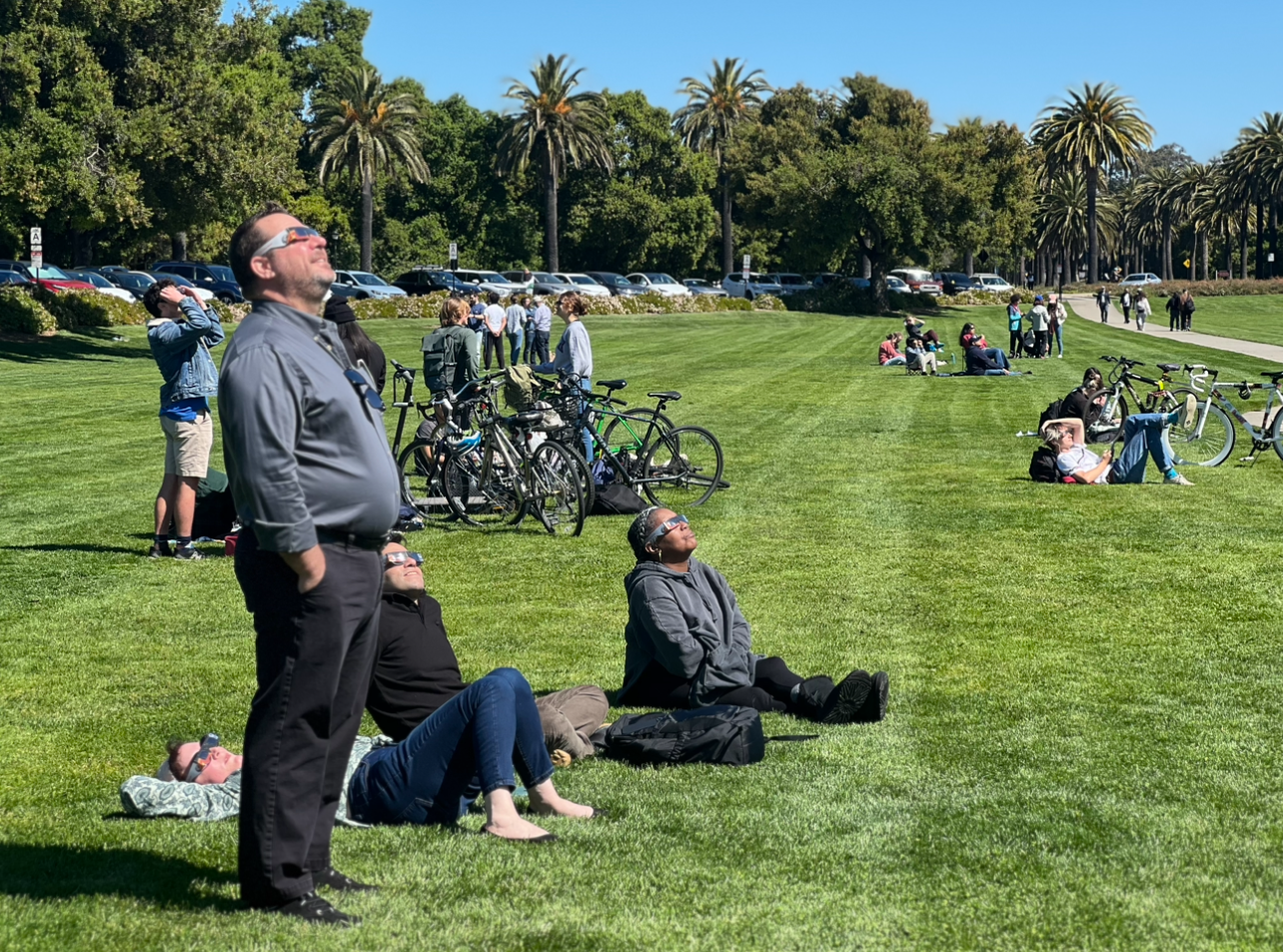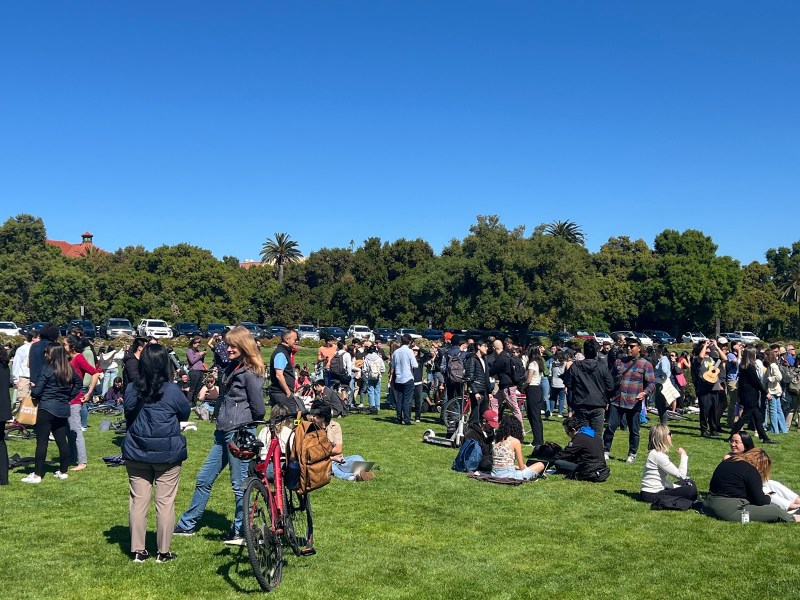On April 8, hundreds of members of the Stanford community gathered on the Oval as part of the earth and planetary sciences (EPS) department’s watch party for the partial solar eclipse, complete with informational guides and free solar viewing glasses.
The eclipse began at 10:13 a.m., reaching totality at 11:12 a.m., before concluding at 11:18 a.m. Solar glasses ran out within 45 minutes.
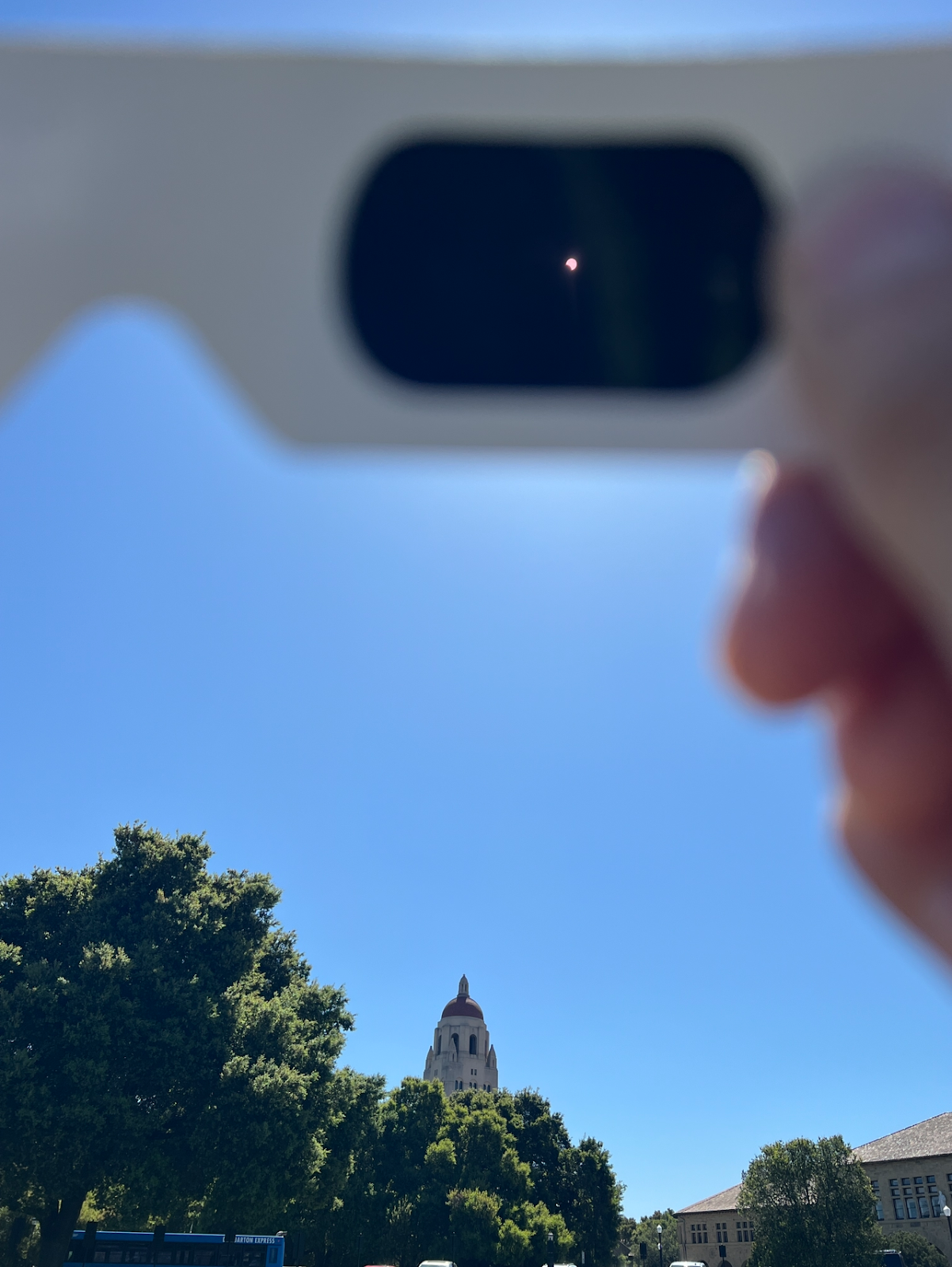
Claudia Baroni, the EPS director of finance and operations, came up with the idea for the event. “I wanted the eclipse to be a celebration of science and community, really just to bring the department together, but now so many people are here together and it’s great,” she said.
Baroni said she and her colleagues decided to organize the event because eclipses, which are studied under the umbrella of planetary sciences, are EPS’s wheelhouse. “It’s our department, if we don’t organize, I don’t think anyone will. Plus it’s so fun,” she said.
Attendees at the event not only got a chance to watch the spectacle, but also to learn about it. Several members of the EPS department offered mini lectures while handing out the solar viewing glasses.
Colin Marvin, a third-year Ph.D. student in geological sciences, said there were both lunar and solar eclipses. “The one we’re experiencing is solar, where the moon passes in front of the Sun. Of those two, there are three different types of solar eclipses: partial, total and annular, with partial being what we’re able to see from here. Roughly 35% of the Sun will be covered.”
He also described the unique circumstances that allow for an eclipse: “The Sun is roughly 400 times larger than the Moon, but is also 400 times farther away. This unique coincidence is what causes them to appear the same size in the sky, letting the moon fully cover the Sun for an eclipse.”
The last total solar eclipse to pass over the United States was in 2017. Some attendees recounted their experiences of seeing prior eclipses on campus.
Kim Vonner, the structural engineering & mechanics program administrator in the civil and environmental engineering department, said the community has “always gone out and viewed the eclipses.”
“Seven years ago I was on the Y2E2 balcony, sharing glasses, laughing, watching the change,” she said. “I remember one year, I saw someone had put together a stack of Ray Bans to view the eclipse since we had run out of glasses!”
Solar viewing glasses — the safest way to view an eclipse directly and avoid eye damage, according to NASA — also ran out at this year’s event. But attendees were not deterred from coming up with inventive ways to watch the event.
Tim Flint, a seventh-year Ph.D. student at the Center for Turbulence Research, arrived after the glasses had run out. “We had some paper on us and came up with a pinhole idea, and it worked out really well,” he said.
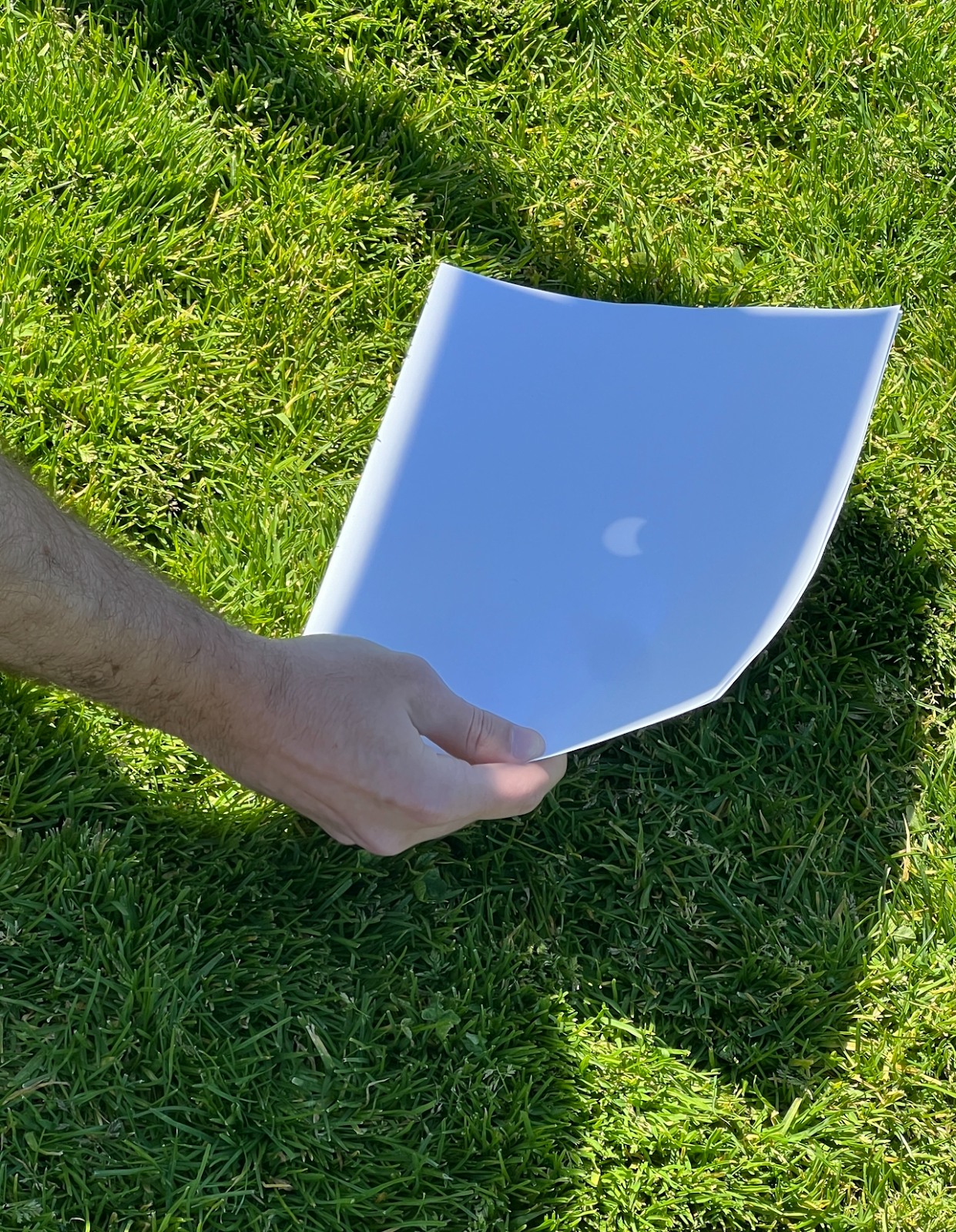
Pinhole viewing, which involves the use of two sheets of paper — one perforated and held at an angle to the sun to cast a shadow on the second — was a popular and simple way to watch the eclipse. Many other attendees gathered around Flint’s group or decided to make their own pinhole viewing devices.
“We don’t even know anything about space! It just seemed like a good idea at the time,” Flint said.
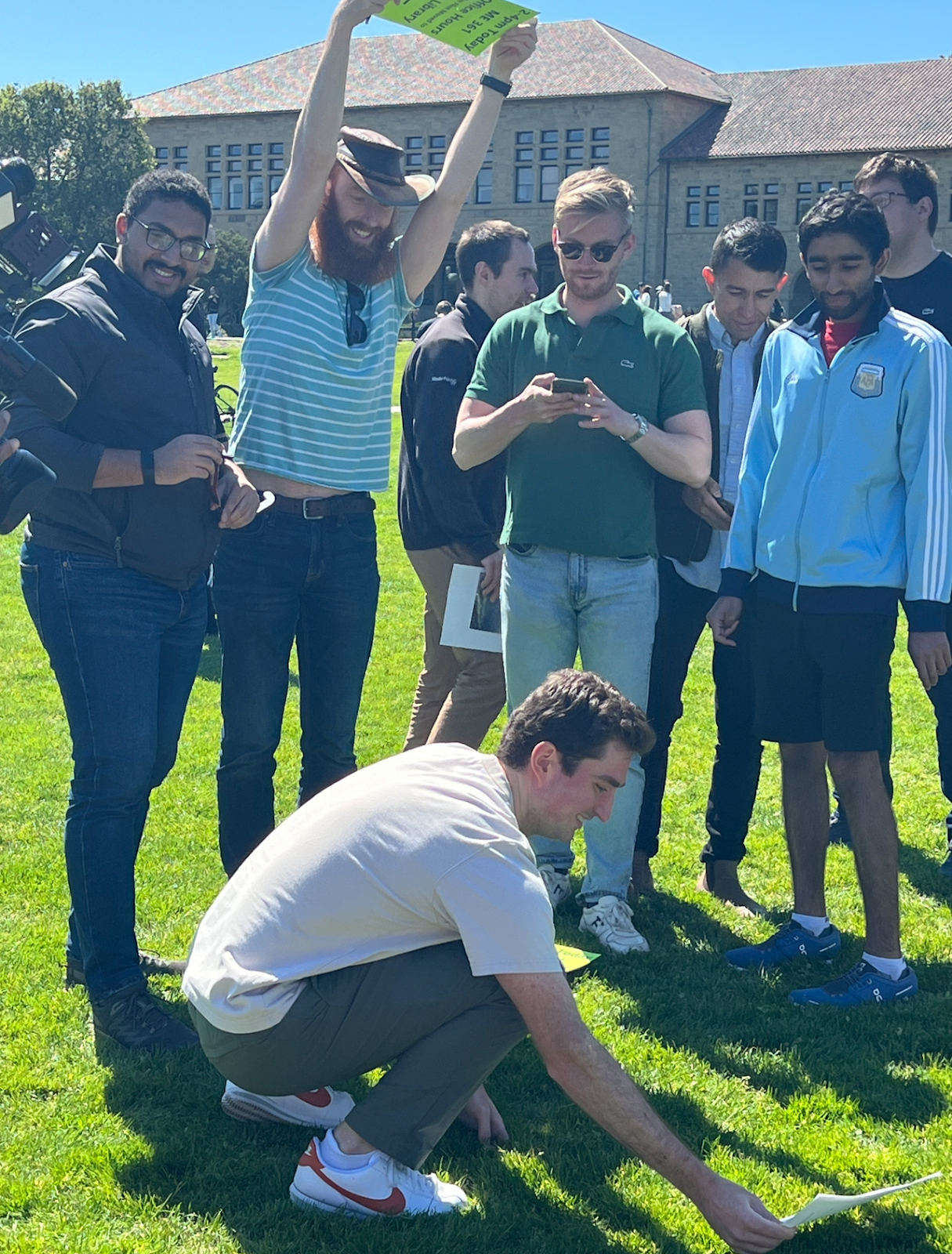
For those who missed out on the eclipse, an opportunity lies ahead, with some patience: The next total solar eclipse in the United States is set to happen in 2044.
